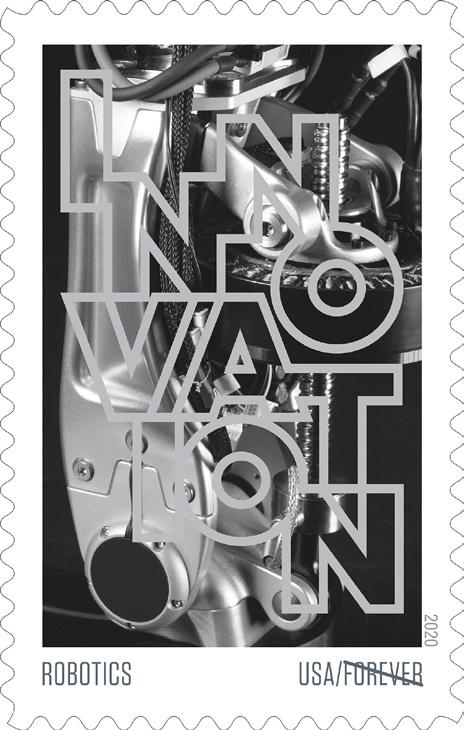
5 minute read
Happenings
by AOPA
RESEARCH ROUNDUP GAO Investigates Population of Female Veterans With Limb Loss
Examples of female veterans’ lower-limb prostheses The U.S. Government Accounting Office Female veterans with amputations (GAO) released a report in November were younger than their male counterdetailing a study of women veterans parts, averaging 61 years compared to who use prostheses. According to the 69 years for men. Among veterans with Veterans Health Administration’s (VHA’s) amputations who also had diabetes or Amputee Data Repository, the female vet- cardiovascular conditions, the number eran amputee population grew from 2,049 and proportion of female veterans veterans (2.3 percent of the total veteran with amputations increased from amputee population) to 2,622 veterans 769 (1.5 percent) in fiscal year 2015 to (2.7 percent) from fiscal year 2015 to 2019. 1,077 (1.9 percent) in fiscal year 2019. During this timeframe, VHA provided The number and proportion of 47,939 artificial limbs to female veterans. inpatient and outpatient visits increased among female veteran amputees from fiscal year 2015 to 2019, rising from 973 female veterans (2.2 percent of all visits to an O&P clinic) to 1,587 (3.0 percent). In addition, the number of visits to an O&P clinic increased from 475 per 1,000 female veteran amputees to 605 visits per 1,000 female veteran amputees from fiscal year 2015 to 2019, representing a 27.4 percent change.
VHA has boosted initiatives to raise awareness of the prosthetic services provided to female veterans, according to the report. One VA medical facility created a prosthetics boutique in its women’s health clinic so that veterans could view gender-specific devices and ask contracted vendors questions about the items. The full report is available on the GAO website at www.gao.gov/assets/720/710600.pdf.
Study of Fingerprints Aids in Prosthetic Research
Researchers at the University of Birmingham the resulting increase in the compliance of the ridges causes in the United Kingdom are partnering with the sweat pores eventually to become blocked and prevents research institutions in South Korea in studying finger- excessive moisture that reduces the ability to grip objects. prints to determine how to develop improved prostheses. The research team leveraged laser-based imaging techFingerprints help increase friction when in contact with nology and discovered that moisture regulation could be smooth surfaces, improve grips on rough surfaces, enhance explained by the combination of sweat pore blocking and tactile sensitivity, and employ moisture-regulating mech- the accelerated evaporation of excessive moisture from anisms—qualities that are important to understand when external wetting as a result of the specific cross-sectional building artificial hands, according to the researchers. shape of the epidermal furrows when in contact with an
“Understanding the influence of finger pad friction object. These two functions result in maintaining the optimum will help us to develop more realistic tactile sensors—for amount of moisture in the fingerprint ridges, which maxiexample, applications in robotics and prosthetics and mizes friction whether the finger pad is initially wet or dry. haptic feedback systems for touch screens and virtual “This dual-mechanism for managing moisture has proreality environments,” said Mike Adams, PhD, CEng, pro- vided primates with an evolutionary advantage in dry and fessor in product engineering and manufacturing at the wet conditions, giving them manipulative and locomotive University of Birmingham and co-author of the study. abilities not available to other animals, such as bears and
The researchers have discovered that, when finger pads are in big cats,” said Adams. Future studies could help sciencontact with impermeable surfaces, the sweat from pores in the tists develop better prosthetic limbs, robotic equipment, ridges makes the skin softer, which increases friction. However, and virtual reality environments, according to Adams.
Research Team Studies High-Activity Prosthesis Users for Revised PLUS-M

A team from the University of Washington (UW) convened focus groups of active, lower-limb prosthesis users to improve their understanding of mobility to inform the development of new items for the Prosthetic Limb Users Survey of Mobility (PLUS-M) self-report item bank.
A trained facilitator met in-person and online with four focus groups, which comprised athletes, service members, and other active amputees. The facilitator leveraged a semistructured guide to promote discussion. Researchers reviewed and coded the meeting transcripts, then conducted thematic analysis, to identify experiences across participants.
The research team, led by Sara Morgan, PhD, CPO, assistant professor
ICYMI Postage Stamp
prosthesis, part of a series of stamps celebrating innovation in UW’s Department of Rehabilitation Medicine, ultimately identified three themes: mobility after amputation, mobility characteristics, and healthcare providers and systems. Participants described engagement in high-level activities as a learning process that may involve equipment challenges, pain, and injury. They also noted that mobility characteristics, such as postural changes, terrain, and obstacles, sometimes influence their ability to perform high-level activities. These revelations can be integrated into a revised version of the PLUS-M to better assess mobility in active adults. in Disability and Rehabilitation.
Features Robotic Leg

Right, image (detail) of a bionic ankle-foot Details were published in December A new series of U.S. Postal Service (USPS) innovation, representing computing, Forever postage stamps celebrating biomedicine, genome sequencing, innovation features a design showcasing solar technology, and robotics—the a bionic prosthesis designed and built category for which the prosthesis by Matt Carney, PhD, and members was selected. The image used in the of the biomechatronics team at the stamp was taken by photographer Massachusetts Institute of Technology’s Andy Ryan, who suggested the bionic Media Lab. Carney worked on the robotic work of the biomechatronics group leg as part of his PhD project in media to USPS to represent the future of arts and sciences at the Media Lab, robotics. Ryan also created the images which is overseen by Hugh Herr, PhD. that became the computing and solar
The stamp is part of a USPS series on technology stamps in the series.

COVID-19 CONCERNS
HHS Extends Public Health Emergency Into Spring
The COVID-19 public health emergency has been extended until mid-April, according to the Department of Health and Human Services (HHS). The declaration was set to expire on January 20, but the 90-day renewal takes effect on January 21 and eliminates the risk of a lapse during the transition of administrations. “Our work to combat the virus will continue, as will our work to ensure a peaceful and orderly transition,” said HHS Secretary Alex Azar in a tweet announcing the renewal.
The extension means the continuation of several policies tied to the public health emergency, including the Medicare inpatient 20 percent add-on payment for COVID-19 patients, increased federal Medicaid matching rates and maintenance of effort requirements, waivers of telehealth restrictions, and continued requirements that insurers cover COVID-19 testing without cost sharing.
AMPUTEE ATHLETICS
New Museum Showcases Paralympic Athletes
The U.S. Olympic and Paralympic Museum has officially opened in Colorado Springs, Colorado. The museum features the history of Team USA in both the Olympic and Paralympic Games. Visitors can browse the 60,000-square-foot space to learn the compelling stories about the athletes who have competed and view the artifacts, media, and technology associated with the competitors.
The museum was designed to be accessible and interactive. Visit usopm.org for more information.








